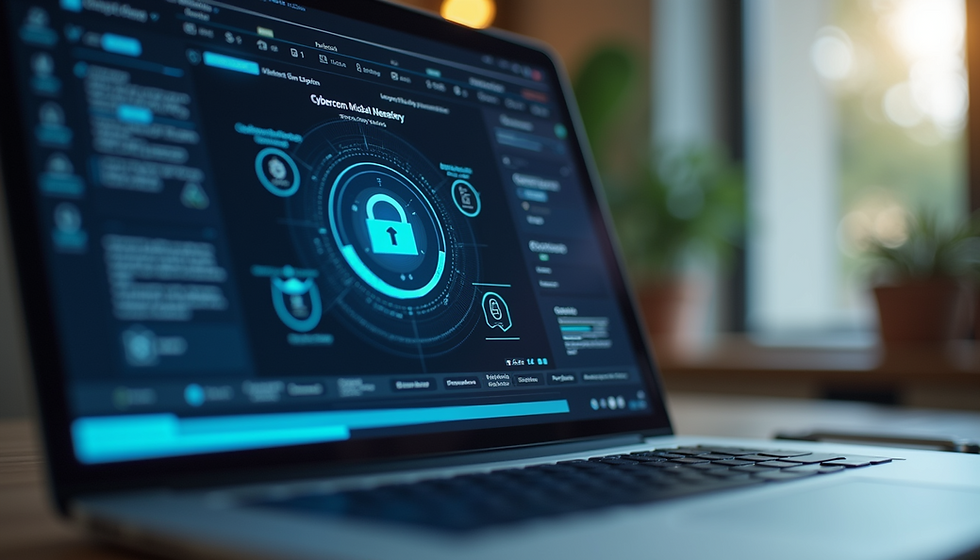Understanding Phishing: A Crucial Guide for SMB Owners
- John W. Harmon, PhD

- Jun 19
- 4 min read
Phishing attacks pose a significant threat to small and medium-sized businesses (SMBs) across the globe. As technology evolves, so do the methods cybercriminals use to exploit vulnerabilities. This blog post aims to educate SMB owners about the dangers of phishing attacks, how to recognize them, and actionable steps to protect their businesses.
The Rise of Phishing Attacks
Phishing is the fraudulent attempt to obtain sensitive information, such as usernames, passwords, and credit card details, by disguising as a trustworthy entity. According to the Anti-Phishing Working Group (APWG), there were over 1.2 million phishing attacks reported in the first quarter of 2021 alone. This shocking statistic underscores the urgency for SMB owners to understand how these scams work and their potential impact on businesses.

Phishing attacks can have dire consequences, such as financial loss, data breaches, and reputational damage. Understanding the different types of phishing attempts is essential for implementing effective safeguards.
Different Types of Phishing Attacks
Phishing attacks come in various forms, each designed to trick unsuspecting users. Here are some common types:
Email Phishing: This is the most prevalent form of phishing. Attackers send emails that appear to be from legitimate organizations, urging users to click a link or download an attachment.
Spear Phishing: Unlike general phishing attempts, spear phishing is targeted at specific individuals or organizations. Attackers often gather personal information to make their fraudulent emails appear more credible.
Whaling: This is a specific type of spear phishing that targets high-profile individuals like company executives. These attacks are highly customized and often contain information that makes them appear legitimate.
Smishing: This involves sending fraudulent SMS messages to trick recipients into revealing personal information.
Vishing: Voice phishing uses phone calls to coax individuals into revealing sensitive data, often impersonating a legitimate company.
Being familiar with these types can help SMB owners identify suspicious activities more effectively.

Recognizing Phishing Attacks
Identifying phishing attempts is not always straightforward, but being aware of common warning signs can help. Here’s what to look for:
Generic Greetings: Phishing emails often use generic greetings like “Dear Customer” instead of addressing you by name. Legitimate organizations typically personalize their communications.
Urgent Language: Many phishing messages create a false sense of urgency, prompting quick action without thorough evaluation. Phrases like “Your account will be suspended” are red flags.
Unfamiliar Sender Address: Check the sender's email address for subtle spelling mistakes or unusual domains. Often, phishing attempts come from addresses that mimic legitimate organizations.
Incorrect Links: Before clicking any link, hover over it to see the actual URL. If it doesn’t match the company’s official website or seems strange, don’t click.
Poor Grammar and Typos: Many phishing emails are riddled with spelling and grammatical errors. Professional organizations typically proofread their communications.
Educating your employees on these warning signs can significantly reduce the likelihood of falling victim to a phishing attack.
Practical Steps to Protect Your Business
Protecting your business from phishing attacks is paramount in today’s digital landscape. Here are actionable tips that SMB owners can implement:
1. Employee Training
Regular training sessions can equip employees with the knowledge to recognize phishing attempts. Offer workshops on cybersecurity best practices and simulate phishing attacks to see how employees respond.
2. Implement Multi-Factor Authentication (MFA)
Enable multi-factor authentication for all company accounts. This adds an extra layer of security by requiring a second form of verification, such as a text message code or authentication app, in addition to the password.
3. Update Security Software
Ensure that your antivirus and anti-malware software is up to date. Older systems may not effectively protect against the latest phishing strategies. Furthermore, consider employing a firewall to monitor incoming and outgoing network traffic.
4. Regularly Back Up Data
Regular data backups can mitigate losses during a successful phishing attack. Ensure that backups are stored securely, ideally offline or in a separate cloud directory, to reduce vulnerability to ransomware.
5. Monitor Financial Transactions
Set up alerts for any unusual financial transactions. Many banks allow for real-time alerts that can notify you immediately of suspicious activity. If you detect any unauthorized access, act quickly to secure your accounts.
6. Establish a Clear Reporting Protocol
Have a clear process for reporting potential phishing attempts. Encourage employees to report suspicious emails or messages immediately, allowing for quick action and assessment of the threat.
Engaging in these protective measures fosters a security-conscious workplace culture.
The Importance of a Security-First Mindset
Cultivating a security-first mindset within your organization is critical in minimizing the risks associated with phishing attacks. Encourage employees to take ownership of their security practices. Make it clear that they are the first line of defense against cyber threats.
In addition to technical measures, consider establishing a cybersecurity policy that outlines the responsibilities of each team member in safeguarding sensitive information.

The Road Ahead
As cybercriminals continue to refine their tactics, staying informed and proactive is essential for SMB owners. The cost of falling victim to a phishing attack can be devastating—not only financially, but also in reputation.
Make employee training and robust security measures a priority. The investment in your team’s knowledge and the technology you use will significantly enhance your business's resilience against phishing threats.
By recognizing phishing attempts and implementing a comprehensive security strategy, SMB owners can protect their organizations from these growing cyber risks. Remember, cybersecurity is not just a technology issue but a shared responsibility among every team member in your organization.
Fostering a culture of awareness and preparedness is your best defense against phishing attacks.




Comments